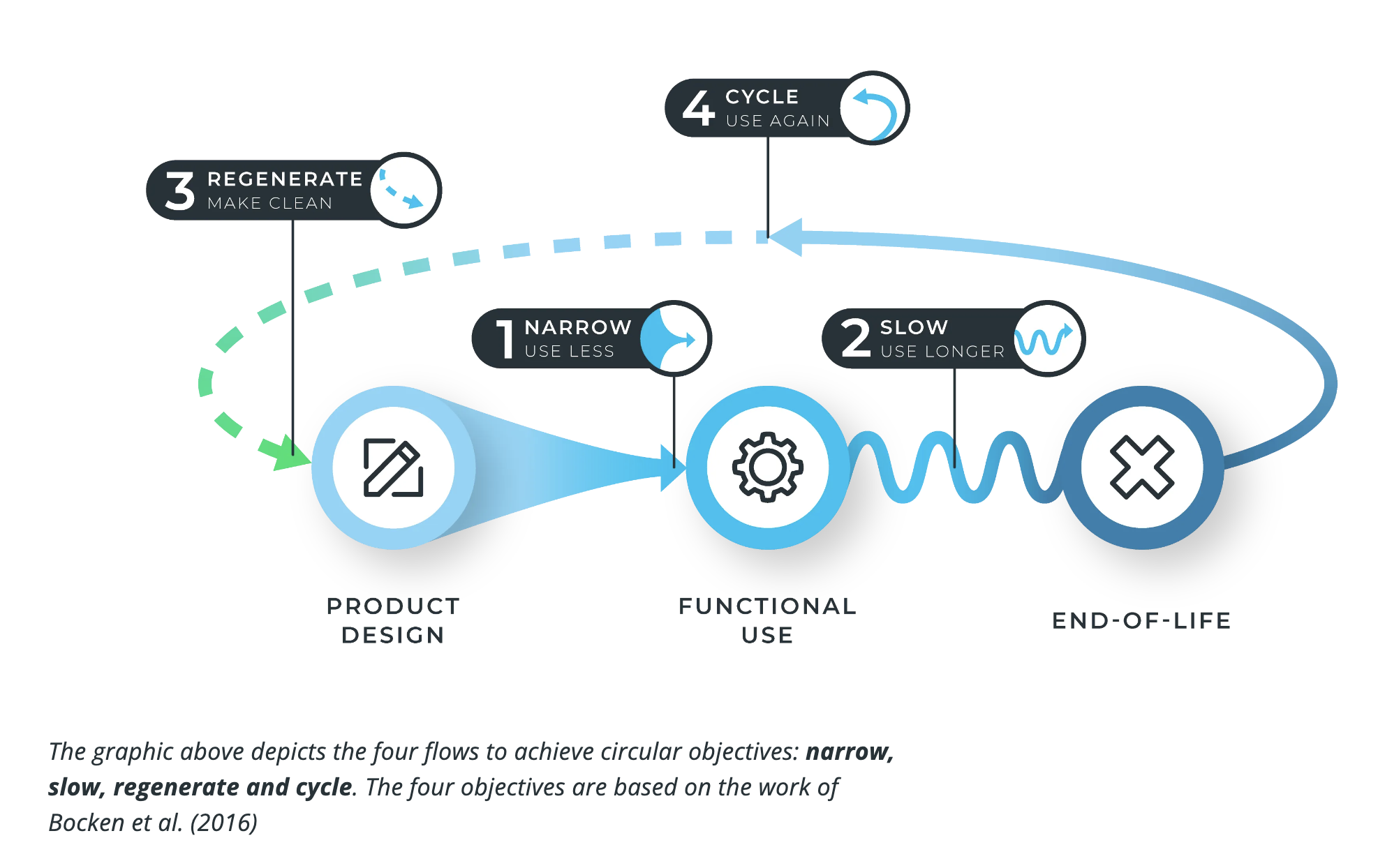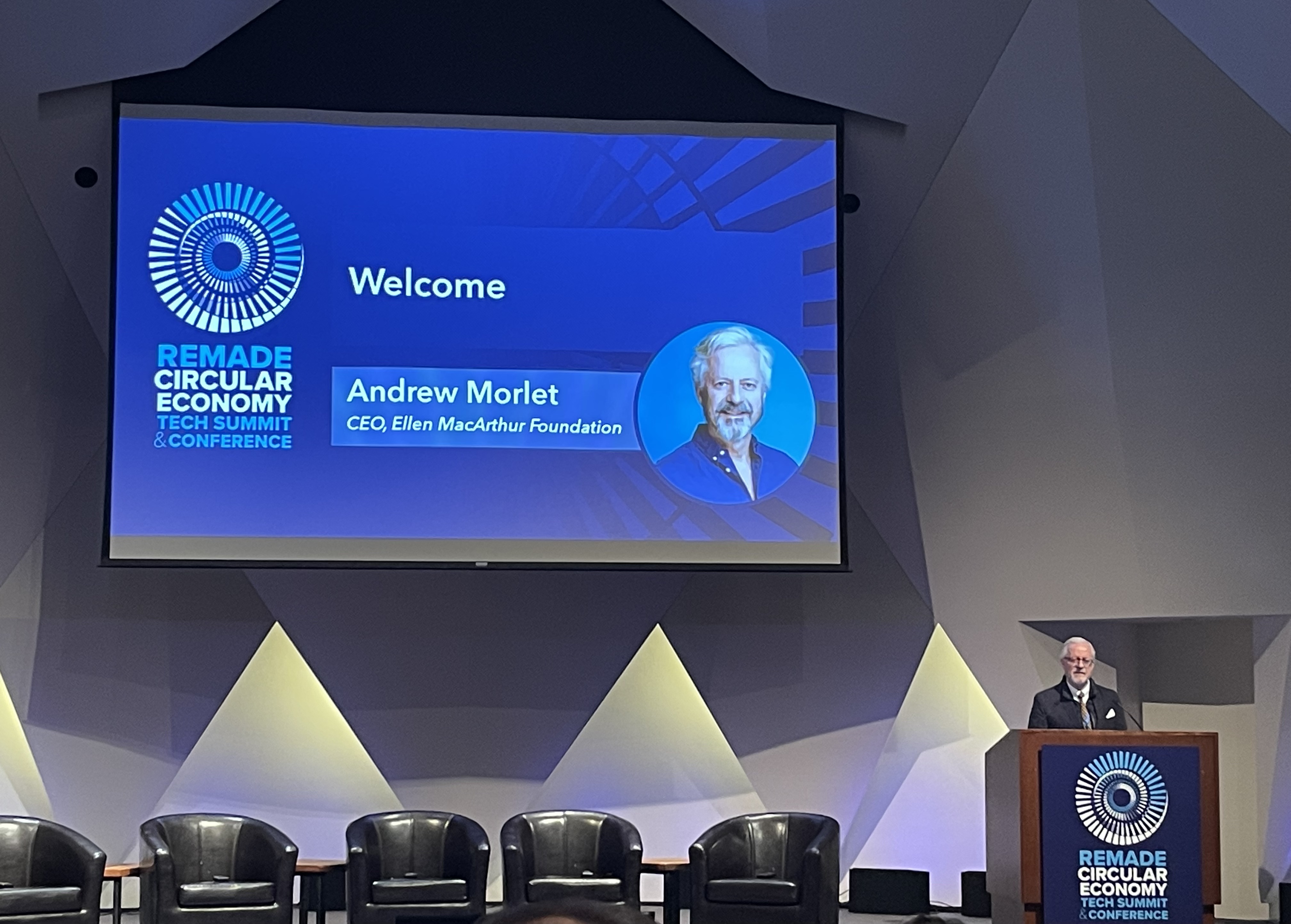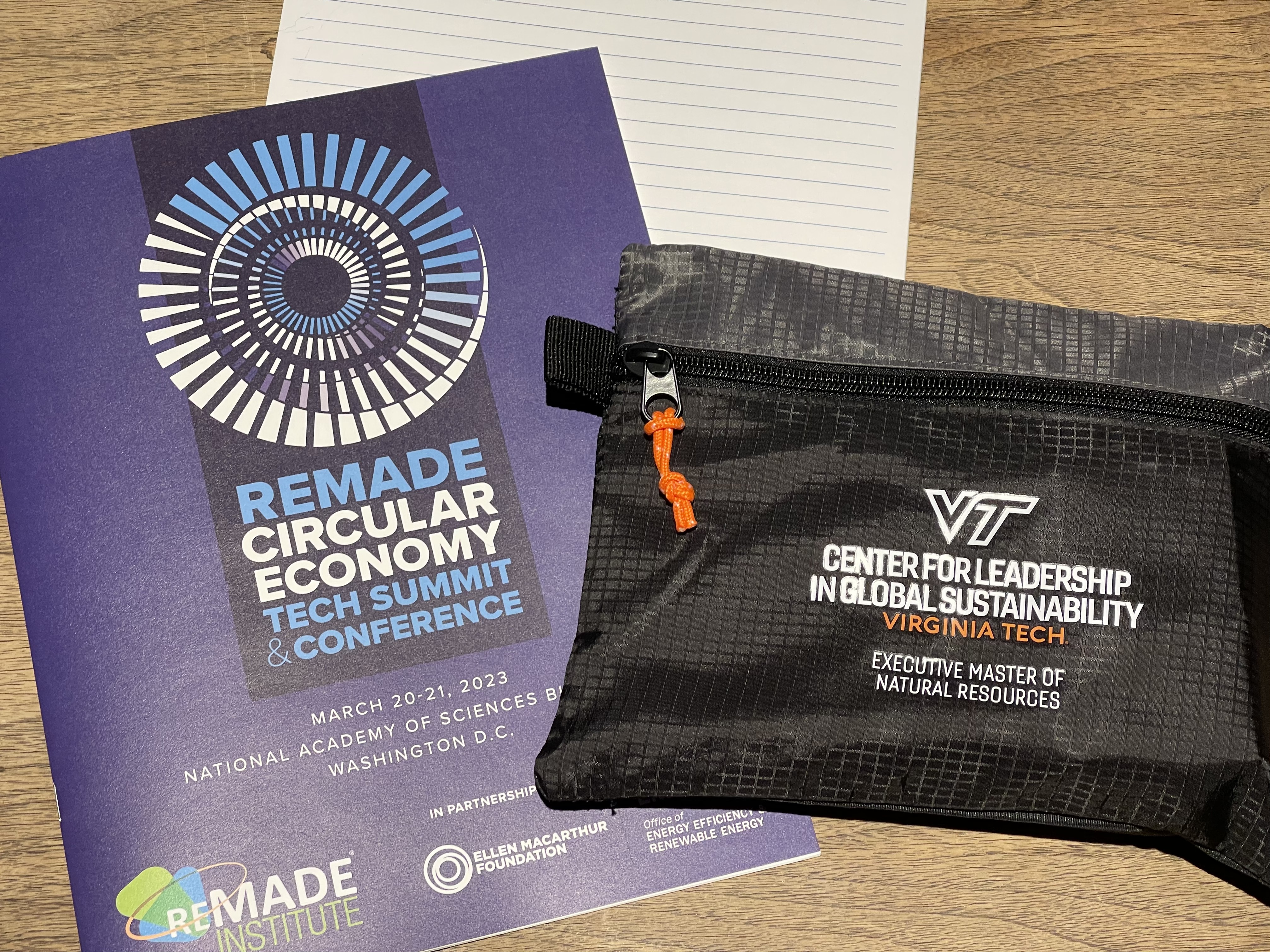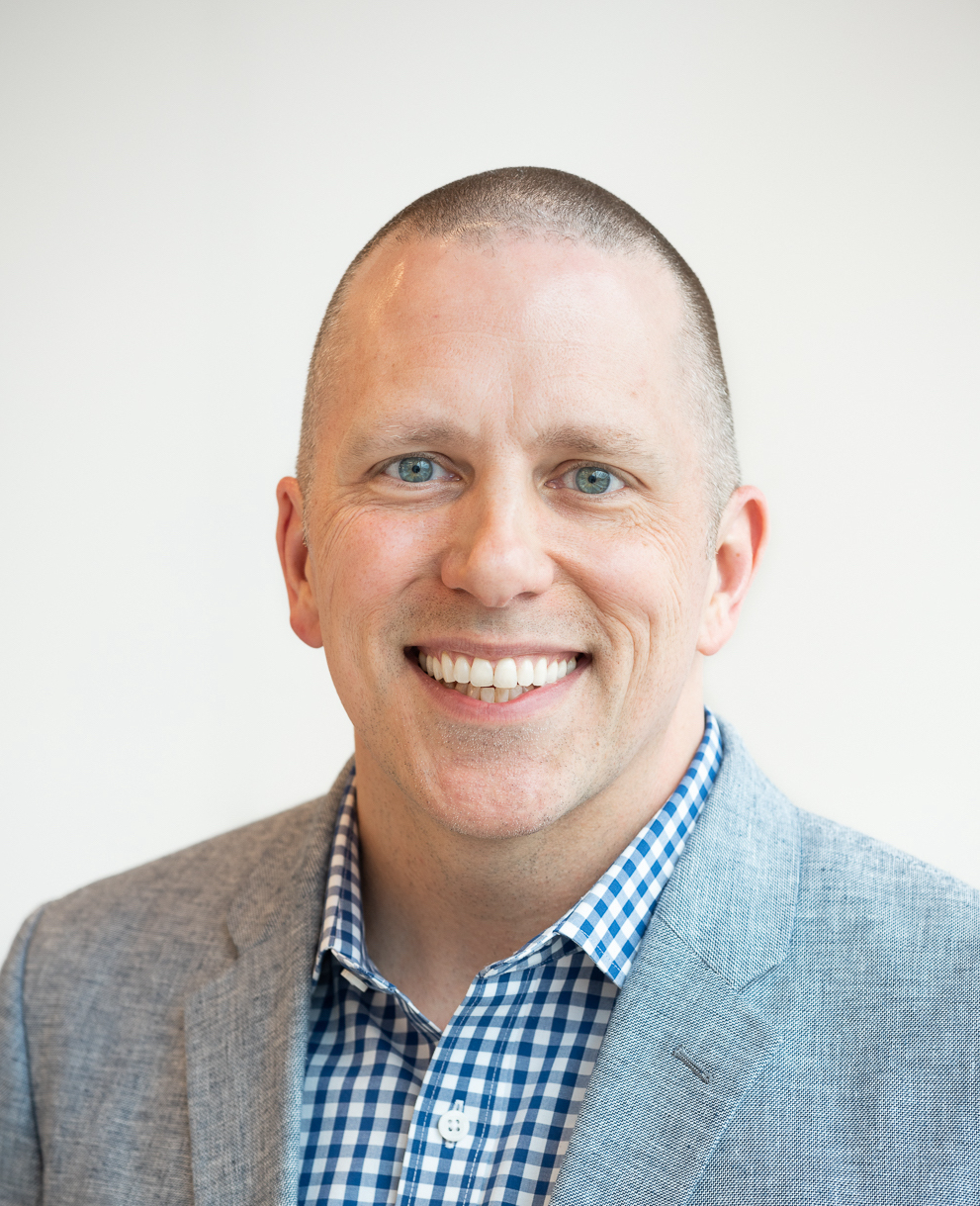Wanted: systems leaders for the circular economy transition
May 9, 2023

By Brian Kaye
Throughout my career I’ve helped organizations come to terms with and manage strategic risks. As a student in Virginia Tech’s Executive Master of Natural Resources (XMNR) program, I’ve been exploring ways to apply my background in risk management to the emerging challenges posed by anthropocentric climate change. A topic of great interest—and an area I aspire to work in over the coming months and years—is the circular economy.
I recently had an opportunity to dive deep into understanding the current state of the circular economy and speak with leaders in the field. This article spotlights several insights I’ve gained, and how my understanding of excellence in sustainability leadership has evolved as a result.
A world in need of greater circularity
In the circular economy, products and materials are used, collected, transformed, and used again (and again) with minimal loss over time. Circular approaches contrast with the linear “make, use, throw away” practices filling our landfills (not to mention our oceans and atmosphere) today. Circularity reduces the need for ongoing extraction of fresh raw materials from the environment. As an example, one circular manufacturing topic in the news lately is reclaiming lithium from first-generation EV batteries as an alternative to mining more. With two to three billion people poised to enter the global middle class over the coming decade, circular solutions represent an important lever to address anticipated demand for material goods.
Circular manufacturing is more than just environmentally responsible; it can be great for business. The United Nations points out that a single ton of discarded consumer electronic devices (e-waste) can yield more gold than a hundred tons of gold ore. What’s needed now are solutions and approaches that make circularity more widely and easily accessible.
Efforts by innovators and leaders to develop, implement, and scale circular approaches have produced some amazing success stories. At the same time, progress is not (yet) keeping up with need. The 2023 Circularity Gap Report estimates that, over the past five years, circular economic activity world-wide has steadily grown in absolute terms while simultaneously falling as a percentage of total economic activity. Simply put, global material demands continue to outpace the circular economy’s capacity to keep up. This needs to change.

Circular economy trailblazers are leading the way
Our XMNR ‘23 cohort recently hosted several leaders working on the circular economy. Shortly after, I attended a groundbreaking Washington, D.C., conference hosted by the REMADE Institute and the Ellen MacArthur Foundation.

Through these experiences, I came to know several inspiring leaders working to advance the circular economy, including:
- PepsiCo Director of Sustainable Packaging Partnerships, Jeff Halvorson, who described leading transformational sustainability programs from inside one of the world’s top five producers of plastic packaging
- White House Office of Science & Technology Policy Deputy Director for Energy, Sally Benson, who described the national-level benefits a more circular economy can offer, like good-paying jobs and increased energy security
- Startup founder, Joanne Rodriguez, whose company Mycocycle is using fungi to rapidly transform toxic building and construction waste, like asphalt shingles, into inert filler material for new building projects while generating zero greenhouse gas emissions

Tools of the (circular) trade for sustainability leadership
Talking with these leaders and others, I noted several shared leadership qualities, including:
- A capacity to rethink fundamentals: Circularity leaders describe breaking with established thought patterns to reexamine any and all assumptions about product intent, design, and manufacturing. With technological innovation presenting exciting possibilities seemingly daily, the path to a more circular economy appears more than ever a test of human imagination. For large organizations, moving beyond incremental changes to existing processes to implement transformational change is especially challenging, but it’s also incredibly necessary.
- Personal resilience in navigating change: Every successful circular economy leader had a story to tell about overcoming resistance—often from those closest to their industry—when new approaches were perceived as threatening to established ways of work and triggered identity protective reactions. Some leaders won over the opposition, others forged strategic alliances and steered around it. They always kept going.
- Seeking value in unexpected partnerships: The holistic approaches required for circularity often call for blended expertise across vast domains of human knowledge. Specialized expertise remains essential, as does an ability to hop forward and backward along the materials lifecycle. Circularity leaders see through silos and constructs that no longer serve and instead behold a universe of opportunities to collaborate.

These recent experiences have helped me to view circularity as more than just a theory (or a distant reality). When steered by strong leaders, circularity can be a viable and practical strategy for addressing critical challenges and capitalizing on new opportunities today.

Brian Kaye has led projects and programs that address strategic risks and safeguard critical business operations for over 20 years. Most recently, he served as Senior Director for Cyber Governance, Risk, and Compliance at Capital One. Before that, he led Business Resilience consulting for the Americas region at international business risk consultancy Control Risks. Brian began his career as an Economist at the Central Intelligence Agency. He holds a master’s degree in International Affairs from Johns Hopkins and an MBA from Shenandoah University. Brian enjoys spending time outdoors on his bike exploring the historic gravel backroads of nearby Loudoun County, Virginia.


